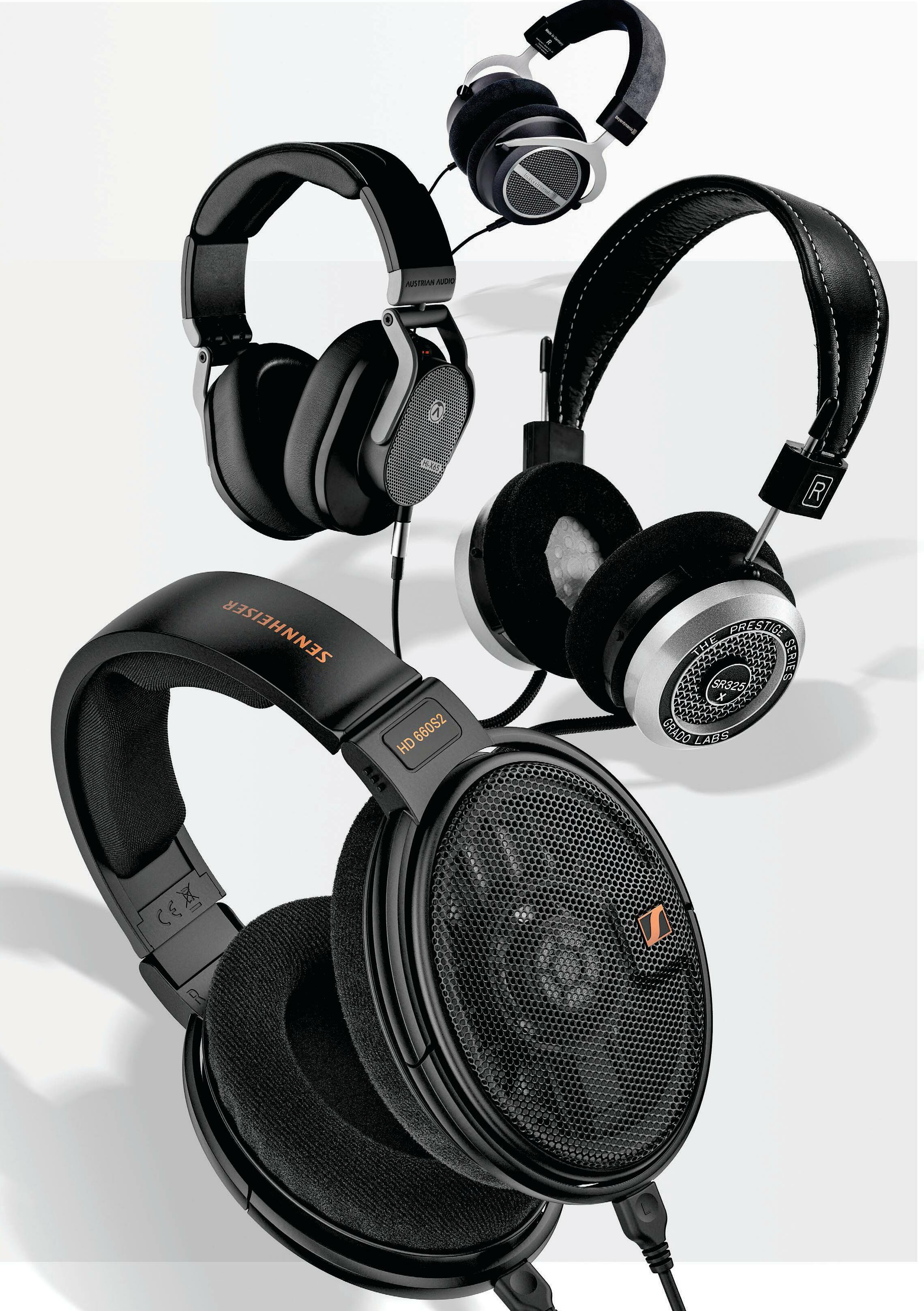An open-back pair of headphones doesn't have an enclosure behind its drivers, which means that sound is fired both towards and away from the listener's ears. This has advantages in producing a much more dynamically expressive and generally more emotive sound than their closed-back cousins, with a clearer, more revealing sound that is also usually more spacious. The downside is that they leak sound as a result of not having that enclosure, and also have next to no isolation from environmental noises. In a room full of people, they will hear your music in a tinny sort of way, and you'll still hear their chatter.
This, as you can imagine, makes them less than ideal for the commute or office. But, your home listening space is where they really are at, um, home. Over the following pages are open-back models from leading headphone manufacturers Grado, Austrian Audio, Beyerdynamic and Sennheiser. Whichever pair suits you best, and whatever genre you're listening to, your personal listening will feel that bit more open and emotive through these cans.
We're pretty sure Elgar would approve, too.
Grado SR325x
£249
These open-backed headphones remain the ones to beat at this level
The Prestige range of headphones has been at the core of Grado's output since it was first introduced three decades ago. While the series has developed over the years, Grado has always done so in small evolutionary steps. The story remains the same for this newest 'x' generation.
Put the SR325x next to its predecessor (the What Hi-Fi? Award-winning SR325e), and there is little to separate them, apart from flatter foam earpads, updated cable and lighter-coloured stitching on the firmly padded headband.
image [https://cdn.magzter.com/1345126686/1739276558/articles/o2_52EZsR1739346058073/1918671911.jpg]
As is usual with Grado, most of the important work goes unseen. The 44mm drive unit has been changed considerably, with a revised motor system, new diaphragm and upgraded coil. The aim is to improve efficiency and reduce distortion. Similarly, that new eightconductor cable uses 'super' annealed copper and is claimed to deliver a purer sound than that used before. It is now terminated by a 3.5mm headphone jack, but a 6.3mm adaptor is also provided.
Elsewhere, the SR325x remain as before.
They still remind us of the headphones that air traffic control operators used in the 1940s. It's a basic aesthetic that divides opinion among the What Hi-Fi? team.
The open-backed design means that they leak sound, but also provide almost nothing in the way of noise isolation from the environment. If you are listening in a room with others, be prepared for your listening experience to be disturbed if they make any noise at all.
Grado's Prestige series models have rarely felt like luxury headphones, and nothing has changed with this new generation. It's an impression that starts with the packaging, which is still a basic cardboard box, and extends to the rather coarse foam used for the also new, thinner earpads. If you are looking for a premium feel you're not going to find it here.
But you will find ruggedness and durability. We have used numerous pairs of Grado Prestige headphones over the years and they have needed little more than semi-regular earpad changes to keep going. Foam earpads don't last for ever, but they are easy and cheap enough to replace. The basic structure of the headphones and materials chosen are impressively robust and deal with day to day use superbly.
Better sound
Comfort is another area where these headphones divide opinion. At 340g, they are not heavy, and there is enough in the way of adjustment to cope with a wide variety of heads. But not everyone will get along with the foam earpads.
Even as long-term Grado users, it takes us a while to get used to them due to their ...


